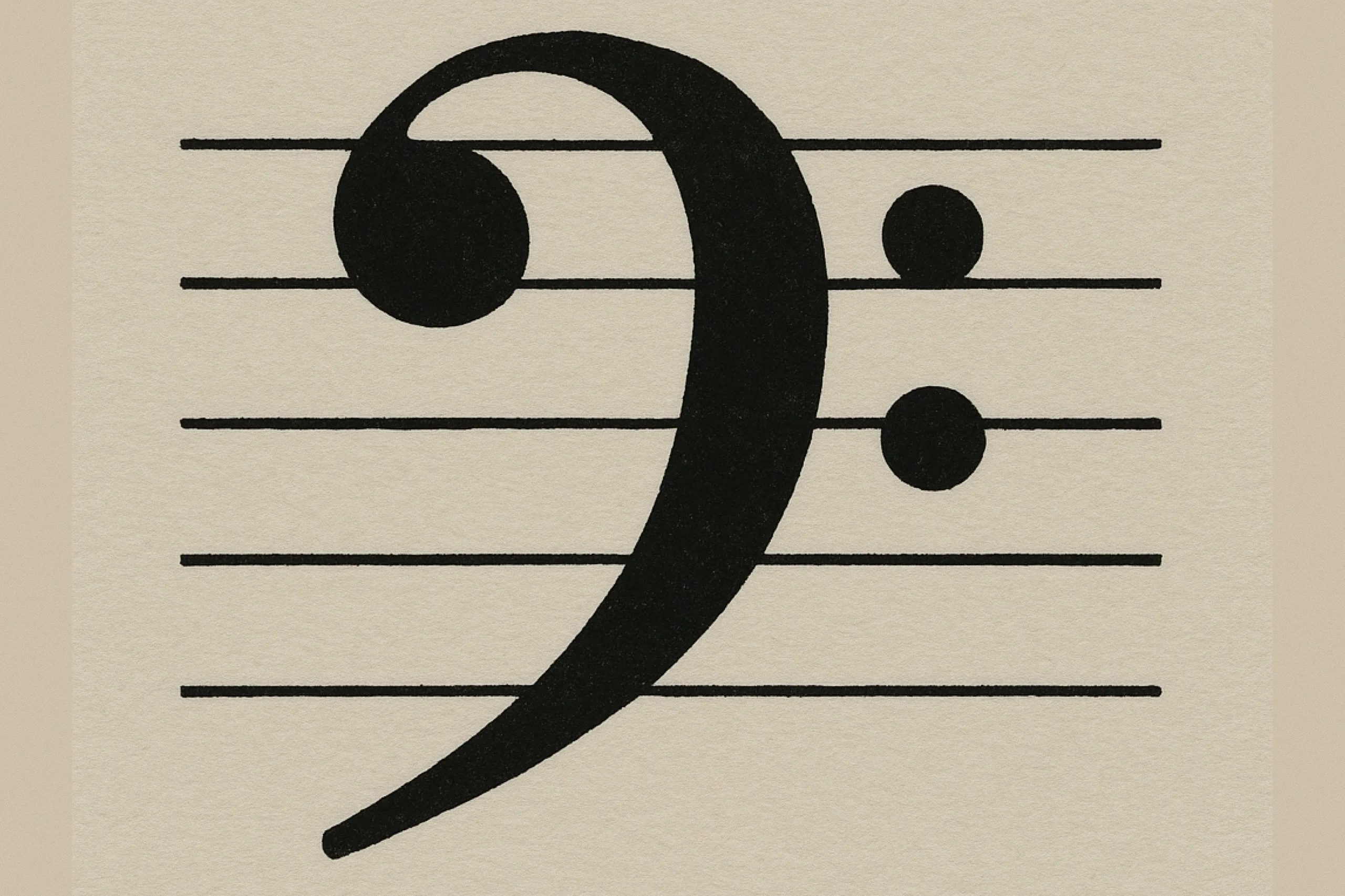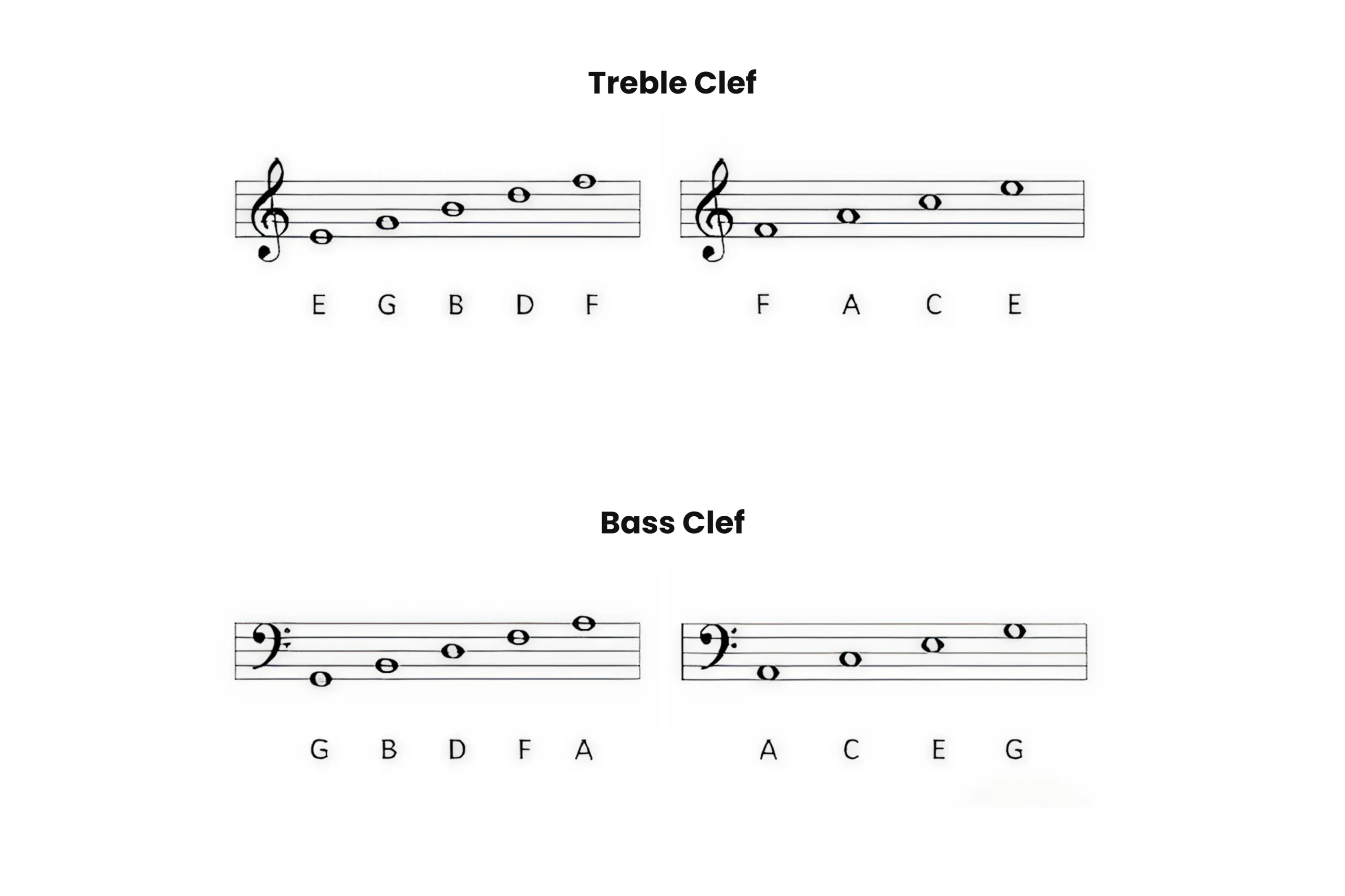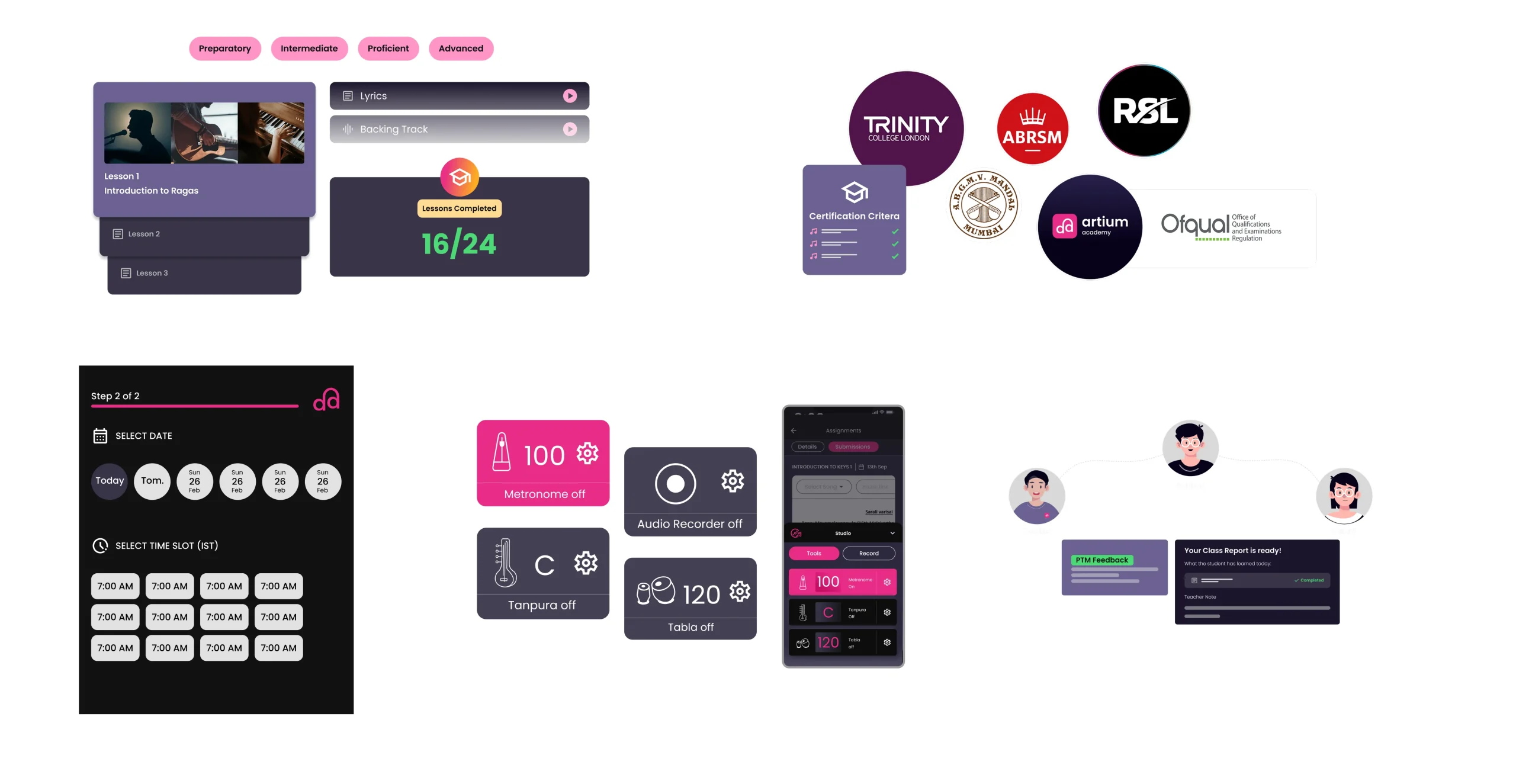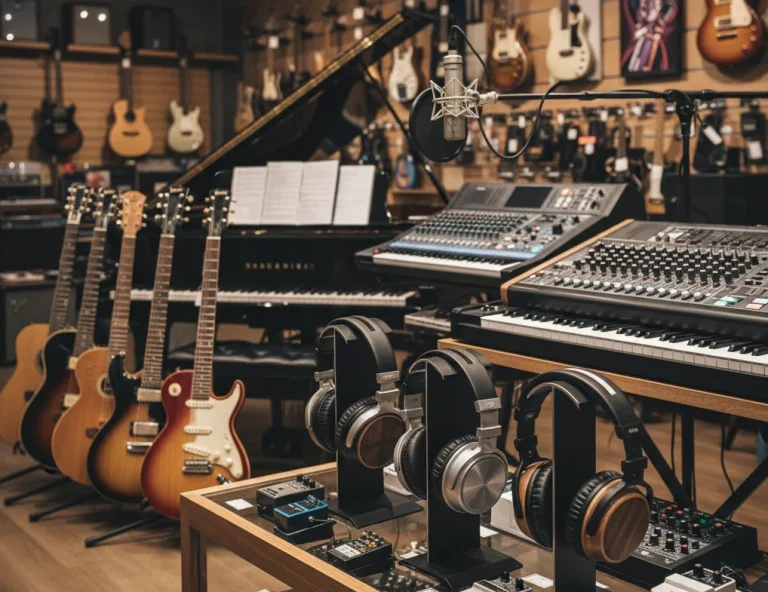All Topics
- Alchemizing Music Concepts for Students
- Artist Spotlight
- artium gift card
- Artium Maestros
- Artium News
- buying guide
- Carnatic Music
- Devotional Music
- Editorials by Ananth Vaidyanathan
- Film Music
- Guitar
- Hindustani Classical Music
- Indian Classical Music
- Indian Folk Music
- Insights
- Instruments
- Karaoke Singing
- Keyboard
- Kids Music
- maestros
- Music Education
- Music for Kids
- Music Industry
- Music Instruments
- Music Legends
- Music Theory
- Music Therapy
- Piano
- piano guide
- Success Stories
- Tamil Film Music
- Telugu Film Music
- Time Theory
- Tools
- Uncategorized
- Vocal Singing
- Vocals
- western classical music
- western music
- Western vocal music
How to Read a Bass Clef on the Piano?
How to Read a Bass Clef on the Piano?

Table of Contents
Here’s a sight to visualise: you are sitting at a grand piano or a keyboard, sheet music right in front of you, ready to bring your piece of music to life. You are confident with your right hand as it glides across the treble clef notes, but when you look to the left, your eye drifts to those mysterious symbols below, the bass clef. Now, suddenly, everything feels new. Don’t worry, it’s a feeling, a lot of pianists go through.
Many pianists have been on this side, where they’re puzzled when they first encounter the bass clef. No doubt, the treble clef is the favorite of all pianists; the bass clef holds equal importance in creating a rich, full sound that makes piano music so appealing to all. Learning how to read a bass clef is more than just decoding dots on a line. It is about unlocking the foundation of piano music – the powerful bass notes that give depth, rhythm and harmonic structure to everything you play.
Learning how to read bass clef notes opens a world of musical expression. So it doesn’t matter if you are a beginner taking your first piano lesson for kids, a hobbyist rediscovering your passion, or a dedicated student working toward mastery, reading the bass clef makes you from someone who plays notes to someone who makes music. The good news is that, with the right approach and consistent practice, you can master this important skill. And with modern online piano classes, learning has never been more accessible or enjoyable.
What is the Bass Clef?
In simple terms, the bass clef is one of the basic symbols of Western music notation. Some say it resembles a stylized backward “C” with two dots. The purpose is to show that the notes on the staff represent the lower-pitched sounds on the piano – the rich, resonant tones that come from the left side of the keyboard. But do you know it is also called the F clef? Wondering why?
That’s because the two dots appearing as part of the bass clef symbol actually surround the fourth line of the staff, marking it as the note F (specifically, the F below middle C). This visual cue helps orient you every time you read bass clef music. The piano has 88 keys spanning over seven octaves. Using only one clef will make reading music very complicated; that’s why, by using both treble and bass clefs together (grand staff), composers notate the full range of the piano clearly and efficiently.

On a piano, typically, your left hand plays the bass clef notes and the right plays the treble clef. This division helps in creating musical texture, melody, harmony and bass foundation that makes piano music compelling.

The Bass Clef Staff: Lines and Spaces
Understanding how to read a bass clef starts with getting familiar with its staff structure. The bass clef uses a five-line staff with four spaces between the lines. These lines and spaces represent a specific note, and memorizing these is your gateway to reading bass clef fluently. Starting from the bottom to the top, these bass clefs represent:
- 1st line (bottom): G
- 2nd line: B
- 3rd line: D
- 4th line: F
- 5th line (top): A
A famous way to remember these clef notes is: “Good Boys Do Fine Always” or “Great Big Dogs Fight Animal”. You can pick one phrase of your choice, or create your own. The idea is to find something memorable that sticks in your mind. The spaces between these lines are spelled out (bottom to top) like –
- 1st space (bottom): A
- 2nd space: C
- 3rd space: E
- 4th space (top): G
A famous way to remember these notes (ACEG) is by spelling it “All Cows Eat Grass”.
Now, it’s not necessary for the music to stay between these five staff lines. If the music goes higher or lower than the staff can accommodate, then shorter horizontal lines called ‘ledger lines’ are used. These extend the staff upward or downward as needed. For example, C is one of the important reference points on the piano, which sits on a ledger line above the bass clef staff. Likewise, notes below the bottom G line use ledger lines.
How to Identify Bass Clef Notes on the Piano?
Now, let us bridge theory and practice by connecting the bass clef symbols on the sheet music to the physical keys on your piano. This is important to bring music to life, as you’ll see how written notes are represented directly to specific piano keys.
Let’s talk about finding your starting point, i.e, Middle C. This is your anchor, and it is situated in the middle of the piano and appears on the ledger line above the bass clef staff. Ideally, you will find it near the brand name or lock. This C is typically the fourth C from the left on an 88-key piano. Once you have found it, you have your reference point for everything else.
Starting from the middle C and moving left (downward in pitch), the white keys follow the musical alphabet backwards:
Middle C > B > A > G > F > E > D > C > B >A > G. Each of these corresponds to specific positions on the bass clef staff.
- Middle C: First ledger line above staff
- B: Top space
- A: Fifth line (top line)
- G: Fourth Space
- F: Fourth line (bass clef symbol’s dots point)
- E: Third space
- D: Third line
- C: Second space
- B: Second line
- A: First space
- G: First line (bottom)
For clarity, the five lines of the bass clef represent the notes G (bottom line), B, D, F (indicated by the two dots of the clef), and A (top line). Between those lines are spaces spelling A, C, E, and G upwardly often remembered through phrases like “Good Boys Do Fine Always” and “All Cows Eat Grass.” Understanding these helps learners quickly identify notes while playing. Many notes fall outside the five-line staff and use ledger lines; a series of short lines extending above or below the staff to indicate higher or lower pitches. The critical Middle C always marks the first ledger line above the staff, acting as a consistent and visual landmark.
The black keys in bass clef represent sharps (#) and flats (♭). A sharp raises a note by one half-step (one key to the right), while a flat lowers it by one half-step (one key to the left). Let’s see this with an example: if you see ‘#’ next to F in bass clef notation, you will play F#, which is the black key immediately to the right of F.
Through repeated practice, beginners build fluency by mentally and physically linking this notation to key positions, developing confidence in playing with both hands treble clef usually played with the right hand and bass clef with the left. This strong foundation is crucial for expressive, balanced piano playing, making the bass clef much less daunting and more natural over time.
This aims to illustrate that mastering the bass clef is not just about reading, but about fully experiencing piano music.
Common Mistakes while Reading the Bass Clef
Here are some frequent mistakes students make while learning bass clef notes and piano positions, and also ways to avoid them:
- Confusing Bass Clef with Treble Clef
This can easily be one of the most common mistakes students make. They mistake the lines and spaces of the bass clef and the treble clef as the same. For instance, the bottom line in treble clef is E, but in bass clef, it’s G.
Solution: Check the clef before you start playing. Make it a habit to identify the clef symbol at the beginning of each staff.
- Misreading Middle C
As mentioned earlier, C appears on the ledger line. Sometimes, students miscalculate its position, thinking it is one note higher or lower than it actually is.
Solution: Practice specifically with middle C until its position becomes second nature. Remember: in bass clef, middle C is the first ledger line above the staff.
- Forgetting Natural
Another common mistake is forgetting accidentals. Sharps, flats, and naturals (accidentals) are placed before notes to help you adjust the pitch. Forgetting to apply these naturals is a frequent mistake.
Solution: Circle or highlight accidentals in your music until you develop the habit of noticing them automatically. Note that it applies naturally throughout the entire measure unless cancelled.
- Rushing Through Note Identification
The excitement of playing a piece always tempts one to guess the notes rather than carefully reading them. This leads to bad habits and slows your overall progress.
Solution: Remember, slow and deliberate progress goes a long way. Set your metronome at a comfortable tempo, and focus on accuracy rather than speed. Speed is a byproduct of repetition.
- Focusing on one Hand more than other
Students often focus more on the treble clef (right hand) and pay less attention to the bass clef (left hand). This creates an imbalance in the playing ability.
Solution: Ensure both hands get equal attention.
Tips to Learn Bass Clef Easily
Here are some proven strategies that will accelerate your learning and make the process more enjoyable –
- Use Mnemonics Consistently
The memory tricks mentioned above, “Good Boys Do Fine Always” for lines and “All Cows Eat Grass” for spaces, really work. Just practice them regularly until they become automatic. Make flashcards with the mnemonic on one side and actual notes on the other. Review them daily during your practice sessions. - Practice Note Recognition Away from the Piano
To become better at this, it is vital to recognize bass clef notes easily without having to count up or down from a reference point. Create flashcards, download apps or online tools that can make this practice gamified and fun.
- Start with Simple Exercises
It’s better to start with simple exercises and then progress into more complex ones. Start with pieces that use primarily bass clef notes within the staff, with no ledger lines anywhere. As you become more comfortable, progress to ledger lines and more complex pieces.
- Play Hands Separately Before Combining
When learning any new piece, practice the bass clef first until you’re confident. Then do the same for the right hand. Once you feel more satisfied with both hands, try playing together. This practice will help you in reading each clef independently.
- Use Color Coding (Temporarily)
Use a visual aid to get accustomed to pattern recognition. You can mark all the Fs in blue or all the Cs in red. As you progress, gradually wean yourself off color coding so you’re reading standard black & white notation. - Sing or Say Note Names Aloud
Before playing, read through the bass clef notes and say their names out loud: “G, B, D, F, A…” This strengthens the connection between the visual symbol and note name. If it makes you comfortable, sing in pitches. It adds another layer or musical understanding. - Practice Daily, Even Briefly
Consistent practice yields better results. Practicing 10-15 mins daily yields better results than sporadic longer sessions. Make bass clef reading a non-negotiable part of your routine.
Learn how to find and identify notes on the piano with this easy guide. Whether you’re just starting out or refreshing your skills, our expert shows you step-by-step how to recognize each note.
Learn the Bass Clef with Artium Academy
The advancement in technology has also impacted modern education. You can learn piano online with experts who provide structured, progressive lessons. With online piano classes, you get flexibility, tailored feedback and access to resources that make learning how to read a bass clef systematic and effective.

At Artium Academy, our curriculum helps students of all ages and skill levels develop strong music reading skills, including training in bass clef. Curated by Grammy-nominated Louiz Banks, our online piano classes embody his expertise and teaching philosophy in every lesson. This ensures you receive world-class instruction, regardless of your location. At Artium, we provide –
- Structured Curriculum
The legends of the industry have designed our curriculum. It takes you step-by-step from basic to advanced repertoire, with bass clef skills integrated naturally throughout. - Flexible Learning
We offer online piano classes that fit right into your schedule. This means you can practice and learn at your own pace, in your own place. - Interactive tools and resources
From video lessons to practice tracks and downloadable materials, we provide everything you need for success. - Tailored Feedback
With the help of a progress tracker, you get real-time updates on your progress. You will be monitored and provided with feedback that suits your individual needs.
Your journey to learning how to read bass clef starts with a single note, a single practice session, and a single commitment to improvement. Every pianist once started as a beginner, just like you, curious, uncertain, but eager to learn. With regular practice, proven strategies, and quality instruction, you can master bass clef notes and piano positions as naturally as reading a word on a page. Your piano learning journey needs the basics that bass clef literacy provides. Join 30,000+ students worldwide who have discovered the right approach to music learning with Artium Academy. Start your journey today and unlock the full potential of your piano playing.
FAQs on How to Read Bass Clef Notes
Use simple mnemonics for lines and spaces. The terms like “Good Boys Do Fine Always” for the five lines (G-B-D-F-A) and “All Cows Eat Grass” for four spaces (A-C-E-G). Repeat these aloud daily to help make the associations automatic.
- Identify the clef symbol at the start of the staff; it’s the “F clef,” with its two dots surrounding the F line.
- Memorize the lines (G-B-D-F-A) and spaces (A-C-E-G).
- Locate Middle C on its ledger line above the staff as your reference point.
- Map each staff note to the corresponding piano key, moving left from Middle C for lower pitches.
Start by locating the F line marked by the bass clef’s dots. Use your memorized line and space names to identify notes on the staff. For notes above or below, count ledger lines from the staff: Middle C sits on the first ledger line above, and notes descend below the bottom line with additional ledger lines.
Look out for the key signature after the bass clef symbol. The pattern of sharps or flats on specific lines and spaces tells you the key (for example, one sharp on the F line indicates G major or E minor). Combine this with the song’s tonal center, often the first or last chord or note to confirm the key in bass clef. Look at the key signature immediately after the bass clef symbol.
- Line (from bottom to top): Good Boys Do Fine Always (G-B-D-F-A)
- Spaces (from bottom to top): All Cows Eat Grass (A-C-E-G)
These memory aids help in recalling bass clef notes quickly and intuitively during practice.








